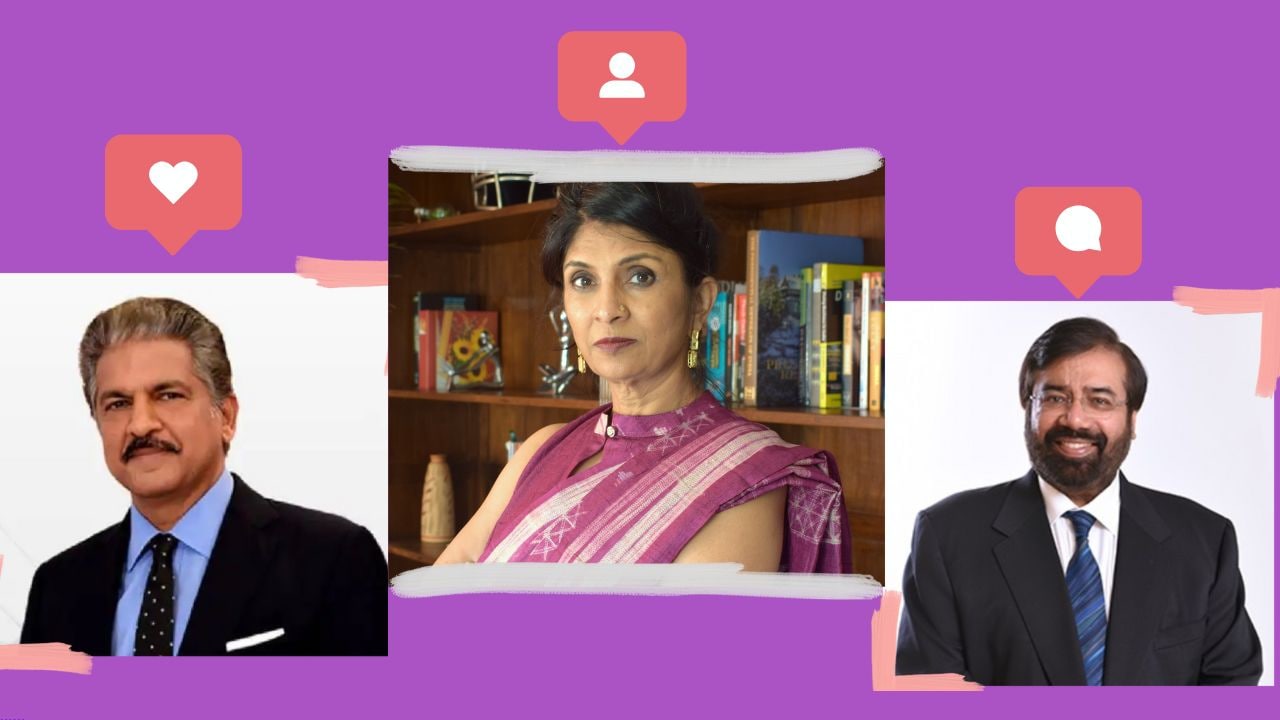From posting a rendition of the popular Kesariya soundtrack from Brahmastra to sharing an alternate viewpoint on moonlighting, Harsh Goenka’s Twitter feed is as varied as one can imagine.
The RPG Enterprise chairman, who has over 1.7 million followers on Twitter, is an eclectic personality who shares all kinds of content, including motivational messages, his company’s achievements, viral videos and even posts you may see as WhatsApp forwards.
Mahindra Group’s chairman Anand Mahindra, who has over 9.9 million Twitter followers, also generates massive engagement and interest on the platform.
His posts range from his company’s products (automobiles like Jawa or Thar) to a meme on the Indian version of James Bond,
Vani Kola, founder and managing director of Kalaari Capital, is another leader who keeps her followers engaged through a variety of posts on LinkedIn. Largely centred around technology and start-ups, she also often shares humorous content and thought-provoking videos/photos.
These corporate honchos are engaging their followers through an armoury of content, garnering thousands of likes, retweets, and comments. Their personal posts are often picked up by the media, which further amplifies the message they are putting out making their social presence even more responsible.
Senior corporate leaders taking to social media humanise their larger-than-life-size-size brand image and access the common man’s point of view on everyday things. While a segment of society reveres their position and work, a large number of young users also find them off-putting or cringe-worthy when they post unverified viral content.
The other viewpoint on moonlighting….. can’t be ignored! pic.twitter.com/a1dkC2pBpq
— Harsh Goenka (@hvgoenka) November 2, 2022
How they handle it
Social media postings of corporate leaders are carefully planned. Industry insiders tell Storyboard18 that C-suite leaders have a mix of digital strategies under which they hire an agency/image consultant or an internal team to handle their postings; sometimes they are also personally involved in the process.
Senior public relations professional and founder of The Promise Foundation, Amith Prabhu, personally follows a few CEOs who keep posting interesting content.
“At times, it ends up being borderline cringy. Many of them have found a sweet spot and like to play with their content curation techniques. They use images, videos, and things we sometimes think of but do not put out there for the world to see,” he notes.
Mitesh Kothari, co-founder and CCO at White Rivers Media, thinks that while brands want to promote their products, corporate executives prefer posting meaningful content that connects with the audiences.
“The key to executive branding is to share intelligent insights, unique points of view, and positive impacts of their work to build a content bank full of valuable information,” he adds.
I asked this pooch to look into the future and tell me who would be in the finals of the #T20WorldCup2022 It figured out this ingenious way to look over the ‘wall’ of the present. What do you think it saw? 😊 pic.twitter.com/a5H5OPRiVU
— anand mahindra (@anandmahindra) November 6, 2022
Treading cautiously
While engagement and reaching out to as many users as possible may be one of the objectives of being on social media, leaders have to strictly adhere to the dos and don’ts of the social media world.
Nitin Mantri, group CEO, AvianWE, which handles the PR of some leading firms, believes that while a lot depends on the personality of a corporate leader, opinions on sensitive issues/topics – political or religious – should be avoided.
“Having said that, corporate leaders should definitely take a stand on issues that have a far-reaching socio-economic impact, just like what we saw in the US, around Black Lives Matter or on topics like climate change, employment, etc. Also, one has to draft their messaging well so that it doesn’t have the trolling effect,” he emphasises.
Prabhu adds that content that is defamatory and derogatory must be avoided.
“..check for plagiarism and give credit where it is due. I am going to stick to the Indian context. There are numerous examples around the world, including the new owner of Twitter,” he notes.
Connecting with GenZ, tuning down cringe
When top executives have good public visibility, it humanises the overall brand and increases consumer trust, which is paramount to a company’s success. However, C-suite executives must remain authentic and not try too hard to connect with younger consumers who can call their content out easily.
A founder of a well-known digital agency is of the opinion that cringe content always works. It brings in attention and mass appeal. “There is absolutely nothing wrong with being cringy. Honestly, I think everyone enjoys watching cringe content once in a while. Certain segments on social media will never admit to it. In my view, labelling these senior business leaders cringe influencers is a compliment,” he adds.
AvianWE’s Mantri admits that senior leaders have still not figured out an effective way to connect with GenZ and that’s why these consumers might find their content non-engaging.
“I don’t think using GenZ language will help establish the connection either; one has to be simply authentic, relatable, and snacky. Most of the GenZ are on content-curated platforms like Instagram, Snapchat, etc., where I don’t think many senior leaders have a public profile or presence,” he rues.
